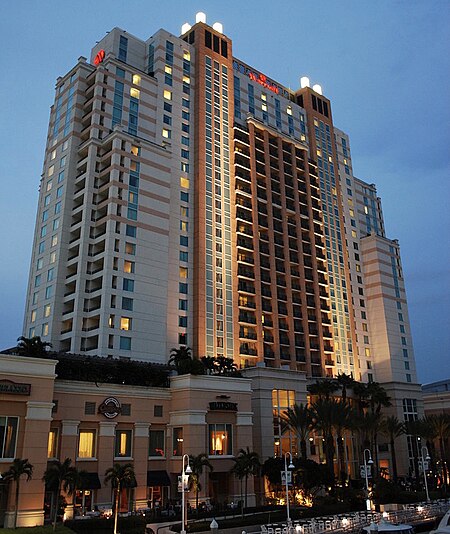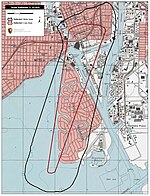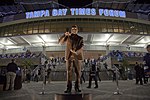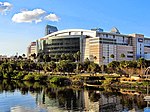Tampa Marriott Waterside
2000 establishments in FloridaHotel buildings completed in 2000Skyscraper hotels in Tampa, Florida

Tampa Marriott Water Street is a 326-foot (99 m) high rise hotel in Tampa, Florida near the Tampa Convention Center It was completed in 2000 and has 27 floors with 750 rooms and 50,000 square feet (4,600 m2) of meeting space. It is the city's largest hotel and the 13th tallest in Tampa.
Excerpt from the Wikipedia article Tampa Marriott Waterside (License: CC BY-SA 3.0, Authors, Images).Tampa Marriott Waterside
Water Street, Tampa Harbour Island
Geographical coordinates (GPS) Address Nearby Places Show on map
Geographical coordinates (GPS)
| Latitude | Longitude |
|---|---|
| N 27.941 ° | E -82.454 ° |
Address
Tampa Marriott Water Street
Water Street 505
33602 Tampa, Harbour Island
Florida, United States
Open on Google Maps








